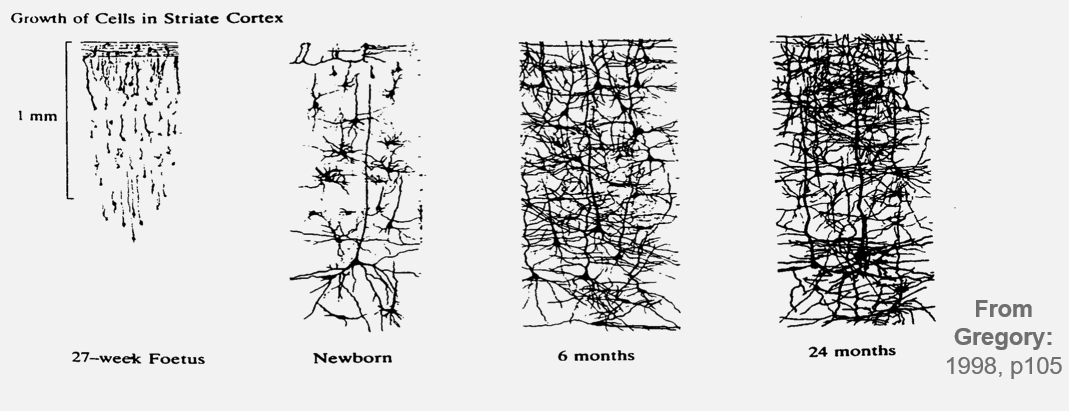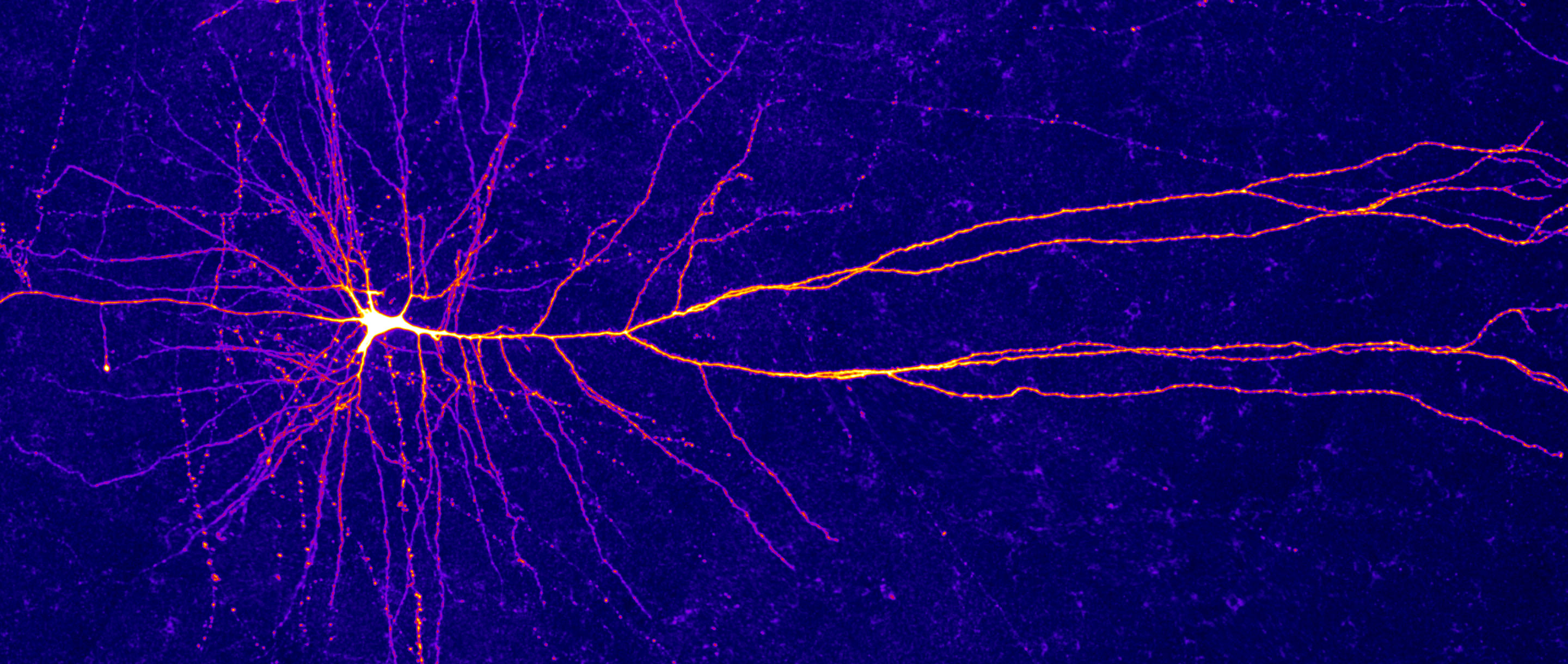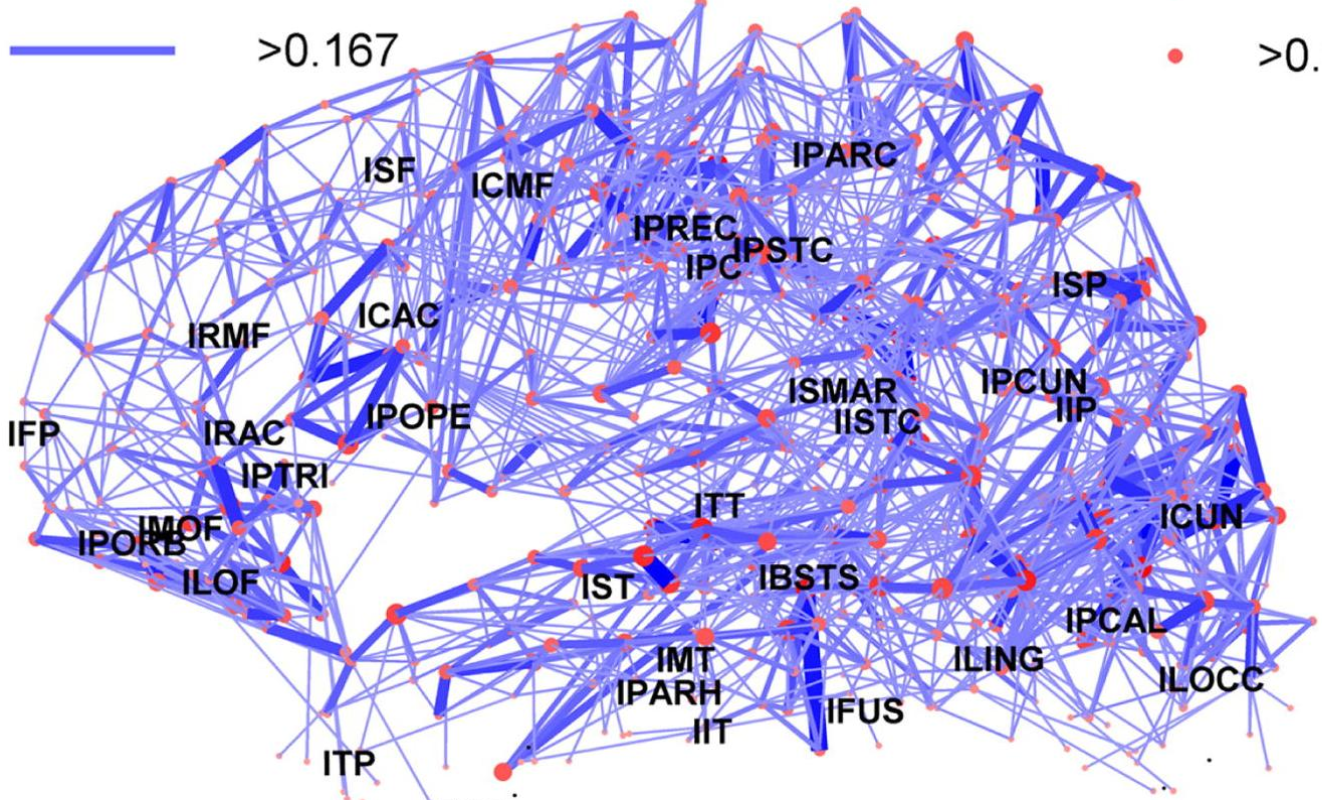The multiscale conjecture is that consciousness builds up at many temporal and spatial scales in the brain (Nunez, 2016) p326, so:
“Consciousness does not work like a light switch that just goes on and off. Rather it is more like a light with variable brightness controlled by a dimmer switch.” (Nunez, 2016) p98.
The electromagnetic field of a nerve is extremely local so it fades after a millimeter or so, but tubulins could synchronize a microcolumn 1/300thmm wide to give P1 waves that occur 50ms after stimulus. This scale of observation might be a fleeting registration of borders.
Synchronizing a microcolumn amplifies its electromagnetic field, increasing its strength and range. This lets cortico-cortical columns of about 10,000 neurons synchronize, perhaps using thalamic beats and cortico-cortical links, to give N1 waves about 130ms after stimulus (John, 2005) p159. An observation at this scale might be a brief registration of features like shape.
Synchronized macrocolumns of about a million neurons can arise in the same way, to give P2 waves about 210ms after stimulus. The observation at this scale might be of a visual object.
The synchrony cascade doesn’t stop there, as macrocolumns can form into areas. The primary visual area V1 at the back of the brain maps shapes in space, then shares its results with nearby V2, V3, V4, V5 and V6 areas that handle relative movement.
Finally, the distant brain areas responsible for memory and planning join the synchrony to form a global observation, based on the same principles. The evidence that synchrony enables consciousness is strong.
When subjects were asked to recognize images, electrodes in the occipitotemporal cortex, hippocampus and prefrontal cortex showed a steady beta synchrony, significantly higher than when they didn’t recognize it (Sehatpour et al., 2008). When input reaches higher visual areas, a remarkable thing happens: sub-millisecond synchronies link distant brain areas as the image is recognized. Distant areas use re-entrant circuits and self-perpetuating loops to set up rhythmic synchronies of amazing precision, that integrate information in some way:
“We believe that the brain integrates functional modules by bringing neural oscillations in those modules into synchrony. Neurons oscillating in synchrony can communicate their information and influence each other’s activities much more effectively than can those oscillating asynchronously.”(Ward, 2007) p325.
In a study of monkeys presented with two stimuli, one of which was relevant, both stimuli produced a V1 response, but only the attended one gave a V4 area gamma synchrony (Bosman et al., 2012). A similar result was found for auditory streams presented simultaneously – only the attended stream synchronized the higher auditory area, leading the authors to suggest a top-down synchrony filter for auditory attention (Lakatos et al., 2013). Human studies of binocular rivalry give each eye a different image but the brain sees one or the other, not a mix of both. Neuromagnetic measurements of rivalry find the hemisphere with better local synchrony predicts the image that is consciously perceived (Tononi, 1998).
In masking studies, where a word is only seen half the time, long-distant gamma synchrony between occipital, parietal and frontal areas occur if the word is seen but not if it isn’t (Melloni et al., 2007). Both cases gave gamma oscillations but phase-locked synchrony between distant areas and the hemispheres only occurred for the visible case and shortly after this transient synchrony, the p300 correlate of consciousness occurred. Evidence from animal and human studies suggests that neural synchrony enables the conscious observation that binds areas:
“We propose that this transient synchronization might enhance the saliency of the activation patterns not only allowing the contents to get access to consciousness but also triggering a cascade of processes such as perceptual stabilization, maintenance in working memory, and generalizations of expectations, all aspects intimately related with conscious awareness.” (Uhlhaas, 2009) p11.
Why do nerves send the same signal hundreds of times a second in synchronized volleys? It can’t be to exchange information, because we neither act nor perceive in hundredths of a second. However these constant pings could build larger synchronies from smaller ones, in a cascade of consciousness


